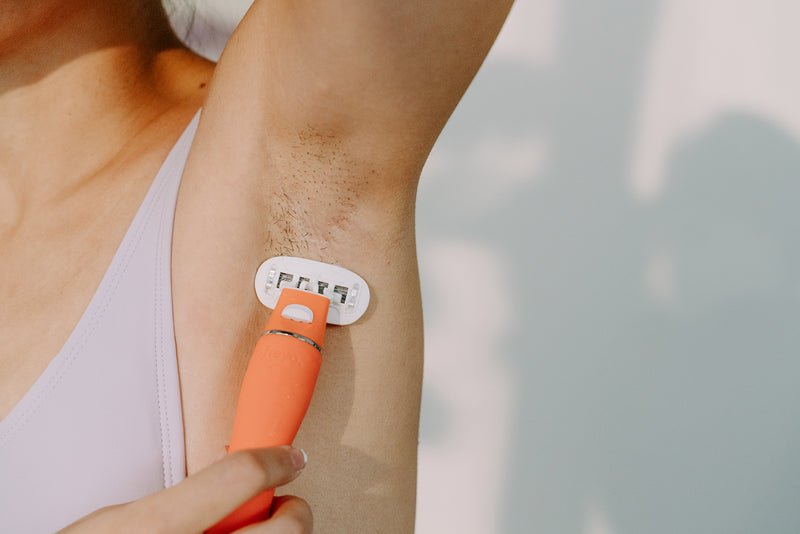Ah, yes, the time has come where you’ve decided to take the dive and begin shaving. But where to begin? The last thing you probably want is razor burns, cuts and nicks or just patchy spots – unless that’s what you want, in which case, go for it girl.
Here’s a quick guide for beginners on shaving body hair.
Using an exfoliator before shaving can help prevent razor burn or ingrown hairs. It also helps prevent your razor from collecting extra dead skin cells, making it clog up. It will also ensure you get a closer shave, resulting in smoother skin. However, it’s worth noting, if you’re planning on shaving your pubic hair try using exfoliating soap or a sponge as other exfoliants may be too harsh for such a sensitive area.
This will help prevent you from getting nicks, cuts or razor burn. It will also moisturize your skin, making sure it’s healthy and smooth after your shave.
Shaving cream
If you don’t want to shave daily, it’s suggested you use shaving cream or foam as it can help create a thicker lather, making it easier to remove some of those longer, stubborn hairs.
Shaving gel
If you plan on being a daily shaver, shaving gel is recommended as it prevents razor burn a little more due to the extra moisture gel provides.
Shaving Oil
Oil on the other hand is a bit of a dark horse when it comes to shaving. Before gel and cream came along, oil was always used. It’s also a more natural alternative and provides an extra boost of moisture – just be careful to not slip while you’re using it.
If you ask any seasoned shaver, one of the worst things you can do is rush when you shave. Moving too quickly can lead to serious nicks and cuts. The last thing you want is to pull a strip of skin out of your razor blades.
As annoying as it may be, the fact is hair grows in so many different directions. So you’re gonna have to hit some areas more than once going a different direction. The most common areas where this will happen will be your thighs, your armpits and your pubic area. It can help to feel the areas you plan to shave before shaving them so you can get to know your body better and learn which directions your hair grows.
After each swipe you need to rinse your razor. If you don’t do this it will clog up pretty quickly. If your razor clogs up it can cause a couple problems. One being you won’t get a good shave, the other being it can cause irritation and even infection if you’re not rinsing your razor properly.
Moisture build up leads to bacteria build up which can lead to infections. It’s important to use a handy dandy hanger to avoid the razor blades from collecting moisture in your shower.
After you’ve finished shaving, get a nice thick moisturizer and lather it on. Moisturizing post-shaving is the ideal time to do it as your pores are open from the warm water and will more easily absorb your moisturizer. This can also help prevent or minimize flaky, dry skin, wrinkles and stretch marks.
It’s recommended you change your razor blade after every 5 - 7 shaves to minimize irritation to your skin and to continue to get a clean shave.
Add Freya razor part and link to our product.
